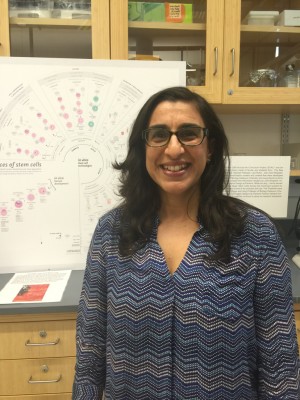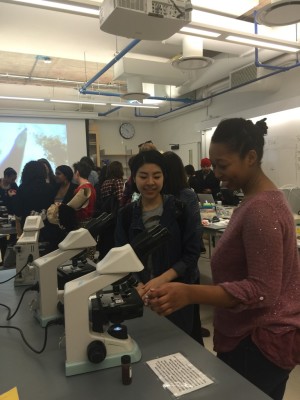Associate Professor of Biology and Project Shepherd of the University Science Labs Katayoun Chamany coordinated a TNS Science Lab Open House on April 6 in recognition of the expanding spaces and curricular offerings in hands-on science that serve all students at the university.
The Open House was held in the main teaching laboratory in room 618 of the University Center, one of two laboratories, the other is located on the fourth floor of the Lang building. Faculty, students and alumni were in attendance.
“We do an open house to help the university community know ways in which we can bring science and math into all of the courses across the curriculum,” said Chamany, Director of the science labs at the university.

The Interdisciplinary Science minor was implemented last year as part of over 50 minors that have been introduced to students, Chamany told the Free Press.
“Now every undergraduate has an opportunity to combine interdisciplinary science with any other programmatic course of study,” she said.
There are currently 20-25 students either majoring or minoring in Interdisciplinary Science.
Some students led one or more workshop at the IS Open House, guiding onlookers and helping them interact with the machinery and tools.

Meredith Grey, a fourth year IS student at Lang, led a self-designed workshop at the Open House, helping visitors conduct experiments on bacteria using differing antibiotics.
Grey also presented a project she completed her freshman year at Lang in Chamany’s Biology, Art, and Social Justice course.
“I put together a proposal, using art, food and science, for an interactive art installation,” she said. “It was basically a dinner party but the food and the decor is themed around tuberculosis and the social and political stigma surrounding tuberculosis [as well as] the lack of public information. It’s an event that was meant to bring this issue “to the dinner table” because tuberculosis affects one in three people in the whole world.”
Students and faculty expressed their satisfaction with the new science labs.
Timon McPhearson, Assistant Professor of Ecology, who also uses the lab in his course, said that the science labs have improved the quality of learning within the classroom.
“This lab has given us a lot more flexibility, advanced equipment, brand new microscopes, new growing chambers, [and] new incubators; all of which the students like to use in experimentation,” said McPhearson. “Most importantly, I think it’s allowing us a more creative, more dynamic, and more advanced, state of the art space to teach science; it really makes teaching now more vibrant and more fun.”







